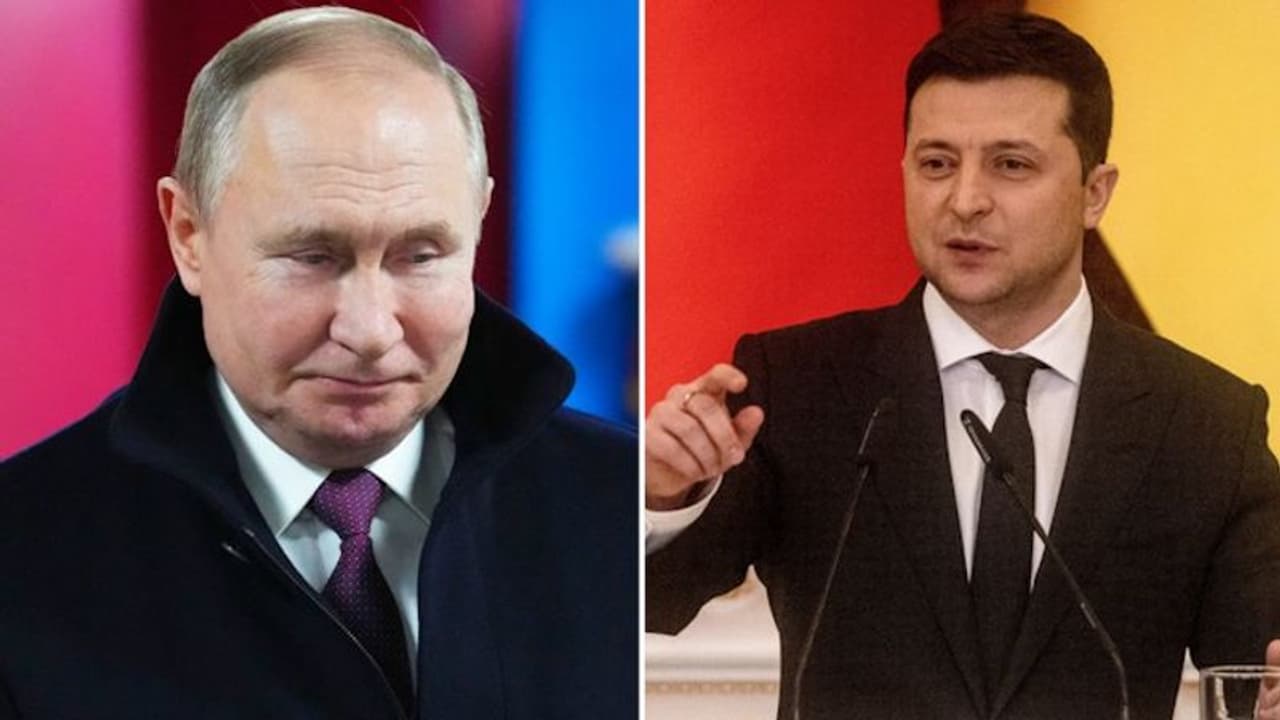Russia has deployed nearly 100,000 troops at its border with Ukraine, raising concerns about a conflict. On the other hand, the conflict appears to result from a deeper issue that dates back a long time. Here is a summary of the key events that contributed to the current situation between Russia and Ukraine.
In the midst of escalating tensions between the two neighbouring countries, the United States has issued a new warning that Russia may attack Ukraine at any time. In the event of a Russian invasion on Ukraine, the US has committed to protecting "every inch" of NATO territory. On the other hand, Moscow has dismissed the warnings as "Western hysteria," rejecting any intentions for an invasion. Russia has deployed nearly 100,000 troops at its border with Ukraine, raising concerns about a conflict. On the other hand, the conflict appears to result from a deeper issue that dates back a long time.

Here is a summary of the key events that contributed to the current situation between Russia and Ukraine.
2008: Ukraine established relations with NATO in 2008, announcing its intention to join the organisation one day. Russia promptly stated its dissatisfaction and found it unacceptable.
2010: Viktor Yanukovych is elected President of Ukraine, and he signs a gas pricing agreement with Russia in exchange for leasing a naval station in Ukraine's Black Sea port.
2013: Yanukovich suspends discussions with the EU and confirms relations with Russia, sparking huge demonstrations.
2014: Protests turn violent in February, and Yanukovich's administration is deposed. After a vote, Russia annexed Crimea in March. The Ukrainian military reports an influx of Russian troops into eastern Ukraine.
2017: Ukraine and the EU signed a deal in 2017 to open markets for free trade of products and services, as well as visa-free travel for Ukrainians throughout the EU.
2018: Russia completed the building of a bridge over the Kerch Strait in 2018, which clogs the streams leading to Ukraine.
November 2021: Satellite footage indicates a massive buildup of Russian troops on Ukraine's border, and Kiev claimed Moscow had mobilised 100,000 soldiers, tanks, and other military gear.
December 2021: US President Joe Biden warned Russia that it would face severe economic consequences if it invades Ukraine. Russia makes precise security demands of the West, including the cessation of all NATO military activities in eastern Europe and Ukraine and the alliance's refusal to admit Ukraine or other former Soviet republics as members.
January 2022: Biden promised Ukraine's President Volodymyr Zelenskyy that if Russia invades Ukraine, the US will "act firmly." The US and Russian officials met in Geneva for diplomatic discussions, but disputes remained unsolved as Moscow reiterated security demands that Washington refused to accept.
Meanwhile, NATO placed soldiers on alert and strengthened its military presence in Eastern Europe with more ships and fighter planes. The United States deployed 8,500 troops on alert and issued a formal answer to Russia's security requests on January 26, 2022, reiterating its commitment to NATO's "open-door" policy while providing a "principled and pragmatic assessment" of Moscow's concerns.
Biden warned of a possible Russian invasion in February 2022, while China lends its diplomatic weight to Russia, telling the United States that Moscow's "legitimate security concerns" should be "considered seriously." Russian President Vladimir Putin claimed that Russia's primary security needs have not been met but that Moscow is willing to continue negotiating. Ukraine's President Zelenkskyy warned the West against causing "panic" that would harm his country's economy.
February 2022: Putin rejected any plans for an invasion and accused the United States of disregarding his country's security requests. According to media reports, Russia has constructed 70% of the military infrastructure required to launch a full-scale invasion of Ukraine. On the other hand, French President Emmanuel Macron met with Russian President Vladimir Putin in Moscow and promised the media that Russia would not worsen the Ukraine situation. The Kremlin, on the other hand, denied that Macron and Putin reached an agreement to de-escalate the conflict. The Pentagon authorised an extra 3,000 US soldiers to be dispatched to Poland.
February 12: Biden and Putin communicate via video conference. The US president stated that a Russian invasion of Ukraine would result in "widespread human misery". The West was dedicated to negotiating to settle the problem and "equally prepared for alternative possibilities."
In the call, Putin complained that the US and NATO had not answered adequately to Russian requests that Ukraine is barred from joining the military alliance and that NATO withdraws its soldiers from Eastern Europe.
Also Read | Ukraine President says Russia may attack on Feb 16, then issues a clarification
